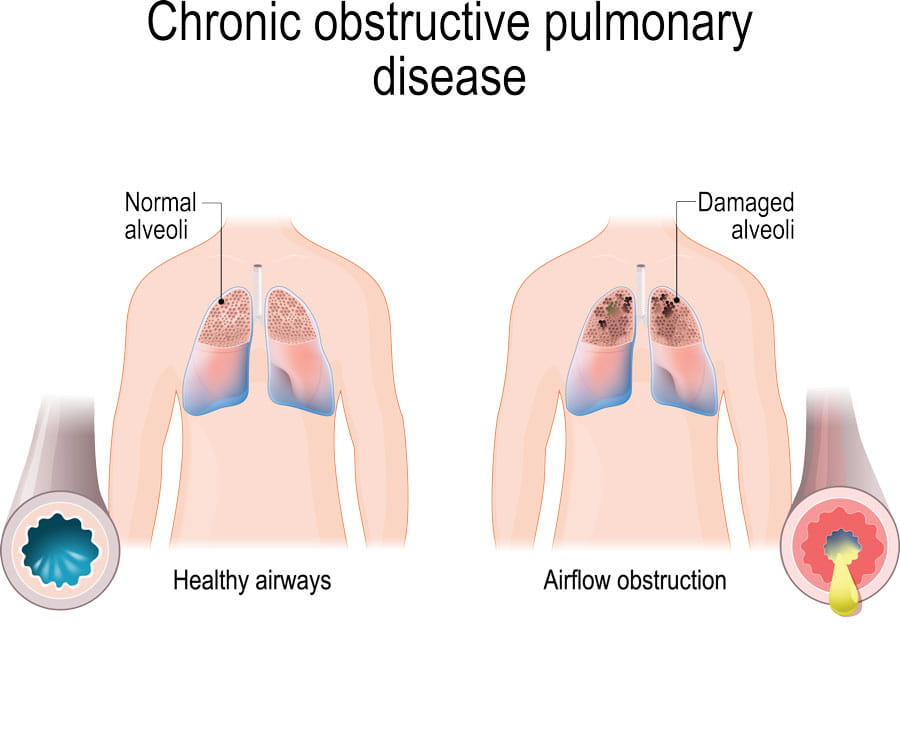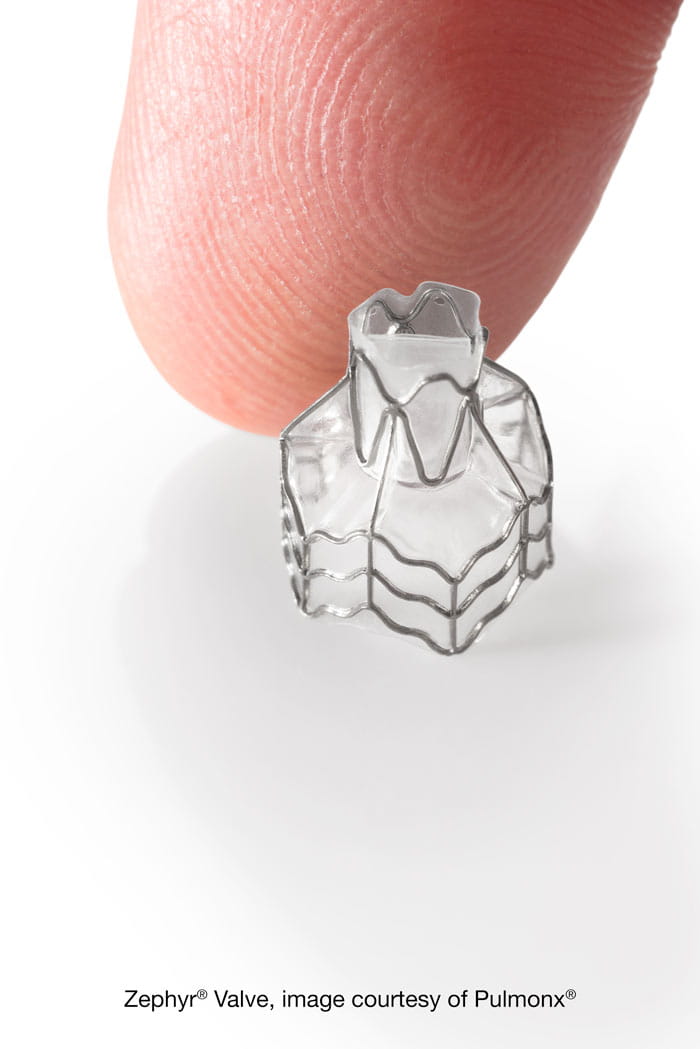A bronchoscopic lung volume reduction, or BLVR, is a minimally invasive procedure to treat some people with severe chronic obstructive pulmonary disease (COPD) and emphysema.
This technique involves placing tiny valves, called Zephyr valves, in selected airways during a bronchoscopy procedure to help people breathe easier.
 The procedure is a great alternative to lung volume reduction surgery (LVRS) for certain eligible patients.
The procedure is a great alternative to lung volume reduction surgery (LVRS) for certain eligible patients.
It’s much less invasive as it doesn’t require any incisions, nor does it carry some of the risks of the traditional surgery. Recovery time is much shorter, too.
Valves are placed in the lungs using a bronchoscope, which is a thin tube with a light and camera on the end, that’s inserted through the mouth.
Though this procedure is relatively new, pulmonologists at The Ohio State University Wexner Medical Center have been performing it since 2019, on the heels of the Food and Drug Administration approving the use of these valves the previous summer.
Our pulmonary team has a proven track record spanning decades of improving outcomes for those with COPD and offering innovative treatments for those suffering from it.
Why choose Ohio State for BLVR?
The Ohio State Wexner Medical Center has been on the forefront of COPD and emphysema treatment for decades. We’ve diligently worked to improve outcomes for those suffering from these conditions by helping them breathe easier and have a better quality of life.
In 1996, we were one of 17 medical centers chosen to participate in a national trial that validated the safety and efficacy of lung volume reduction surgery for certain people with emphysema. Our lung volume reduction surgery program was the first nationwide to receive a certificate of distinction from The Joint Commission, which is a global leader in health care accreditation.
Now, offering the bronchoscopic lung volume reduction continues this tradition of innovation and expands our ability to serve people who have COPD or emphysema.
And while our pulmonologists are skilled at performing this procedure, it’s just one of a number of treatments we have available. Beyond surgery and a procedure like this one, we can also help manage medications, oversee your work with pulmonary rehabilitation specialists and enroll you in groundbreaking clinical trials.
At the Ohio State Wexner Medical Center, we take a well-rounded approach to your COPD care and customize it to fit your needs.
Why is a bronchoscopic lung volume reduction performed?
This procedure helps make it easier for people with severe COPD or emphysema to breathe. These conditions affect the respiratory system by blocking airways, and are incurable.
However, this treatment can give some quality of life back to people, allowing them to be more active and not struggle as hard to breathe.
Beyond a diagnosis of COPD or emphysema, good candidates for the procedure should also experience:
- Significantly reduced lung function
- Having to catch their breath often, even while taking medication as directed
Preparing for a bronchoscopic lung volume reduction
Before moving forward with this procedure, it’s important to determine if you’re a good candidate for it as not all people with COPD and emphysema will be.
A referral from your primary doctor or other specialist to our expert pulmonology team at the Ohio State Wexner Medical Center can help you decide if this version of lung volume reduction will be successful.
Am I a candidate for a BLVR?
We’ll review a number of factors during your initial appointment, including the severity of the disease and other medical issues you might have.
For example, some people might benefit from traditional lung volume reduction surgery because of where the emphysema is found in the lungs. For others, who might have end-stage lung disease, a lung transplant might be their best chance for improved lung function and survival.
However, many patients, especially those who aren’t candidates for surgery, might find the bronchoscopic lung volume reduction using the valves to be an ideal treatment option.
To determine if you're a candidate for the procedure, please get in touch with our team by calling 614-693-6939.
I’m approved for the procedure. Now what?
You’ll be asked not to eat or drink anything the night before the procedure as you’ll be put to sleep with anesthesia during the treatment.

What happens during a bronchoscopic lung volume reduction?
- Step 1 – We will give you medicine to make you sleep during the procedure.
- Step 2 – A bronchoscope will be inserted into your lungs through your mouth.
- Step 3 – Using the bronchoscope, we will place on average four valves in the airways. The number of valves placed will depend on the individual anatomy of your airways and physician discretion.
- Step 4 – You will stay in the hospital for a minimum of three nights.
- Step 5 – After the procedure, you will continue to use the medicines that your doctor has prescribed for your condition.
Risks of a bronchoscopic lung volume reduction
Though this procedure has fewer risks than the lung volume reduction surgery since it’s less invasive, there are still a few risks of which you should be aware.
Most of these are rare occurrences:
- Worsening of COPD symptoms – Shortness of breath, chest pains and coughing could increase in some people.
- Pneumonia – The chance of contracting this infection following the procedure is much less than with surgery; however, it’s still a complication.
- Pneumothorax (collapsed lung) – This can occur when a tear in the lung causes air to build up between the chest wall and lung. This complication can be treated with a temporary tube that allows the air to escape.


